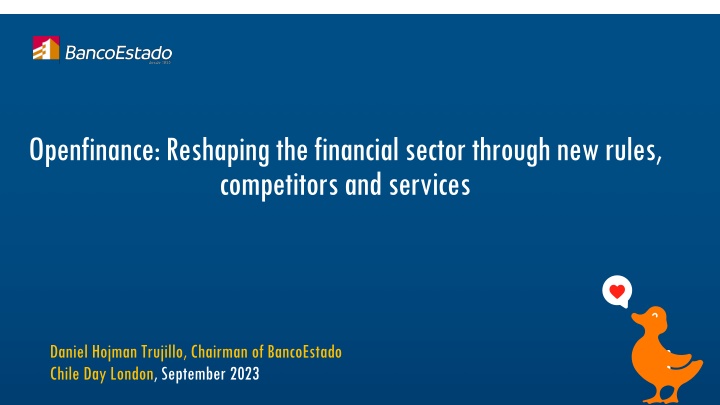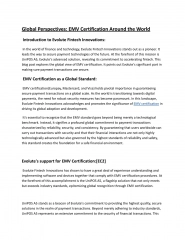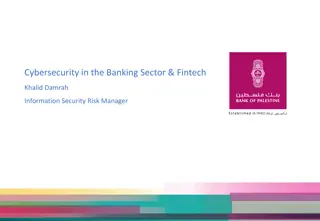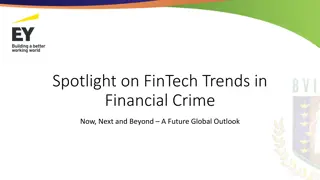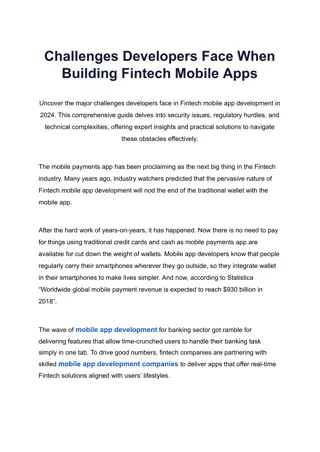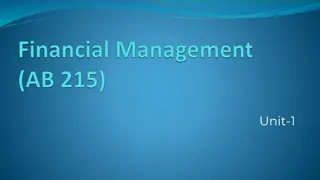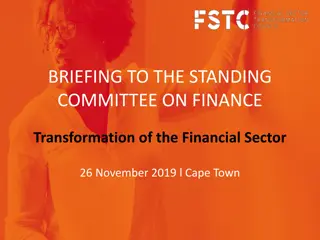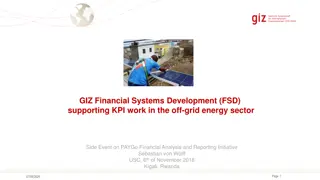Reshaping the Financial Sector: The Open Finance/Fintech Promise
Openfinance is revolutionizing the financial sector through new rules, competitors, and services. The Open Finance/Fintech promise globally focuses on inclusion, democratization of financial services, innovation, and quality. Traditional banks and fintech companies in Chile are bridging gaps in financial inclusion and adopting new regulations to stay competitive in the evolving landscape.
Download Presentation

Please find below an Image/Link to download the presentation.
The content on the website is provided AS IS for your information and personal use only. It may not be sold, licensed, or shared on other websites without obtaining consent from the author.If you encounter any issues during the download, it is possible that the publisher has removed the file from their server.
You are allowed to download the files provided on this website for personal or commercial use, subject to the condition that they are used lawfully. All files are the property of their respective owners.
The content on the website is provided AS IS for your information and personal use only. It may not be sold, licensed, or shared on other websites without obtaining consent from the author.
E N D
Presentation Transcript
Openfinance: Reshapingthefinancialsector throughnew rules, competitorsand services Daniel Hojman Trujillo, Chairman of BancoEstado Chile Day London, September 2023
The Open Finance/Fintech Promise Globally the Open Finance/Fintech promise is associated with Inclusion, democratization of financial services Innovation (sometimes disruptive) Quality of services and efficiency Wide range of possibilities, but different focuses in different countries 1. Traditional financial products: savings, credit, insurance, advice and investments 2. Non-traditional financial products: crowdfunding, P2P, crypto 3. AI Finance: financial planning and management, security (authentication, credit scoring, fraud detection and compliance) 4. Payment means, wallets and marketing 5. Intermediate services: risk, security, authentication 6. Redefining industry boundaries
BancoEstados CUENTA RUT: A Story of innovation, inclusion and digitalization Source: Banco Central, 2022
Traditional banks and fintechs: Copetition? Some Gaps in Chile High financial Inclusi n 1.0: access and use, low in products Inclusion 2.0 Relatively low access o credit of SMEs (but this is changing, FOGAPE) Low productivity and digitalization of SMEs.. Quality of service and UX has high margin of improvement. Payment means, wallets...? Traditional banks: High coverage, credibility + trust, mature system with significant concentration Banlks with Heterogeneous attitudes towards innovation and IT capabilities: intensity and culture. High complementarity: High coverage +Credibility + Agility to innovate New Regulation.... Chances for smaller banks? And new entrants?
